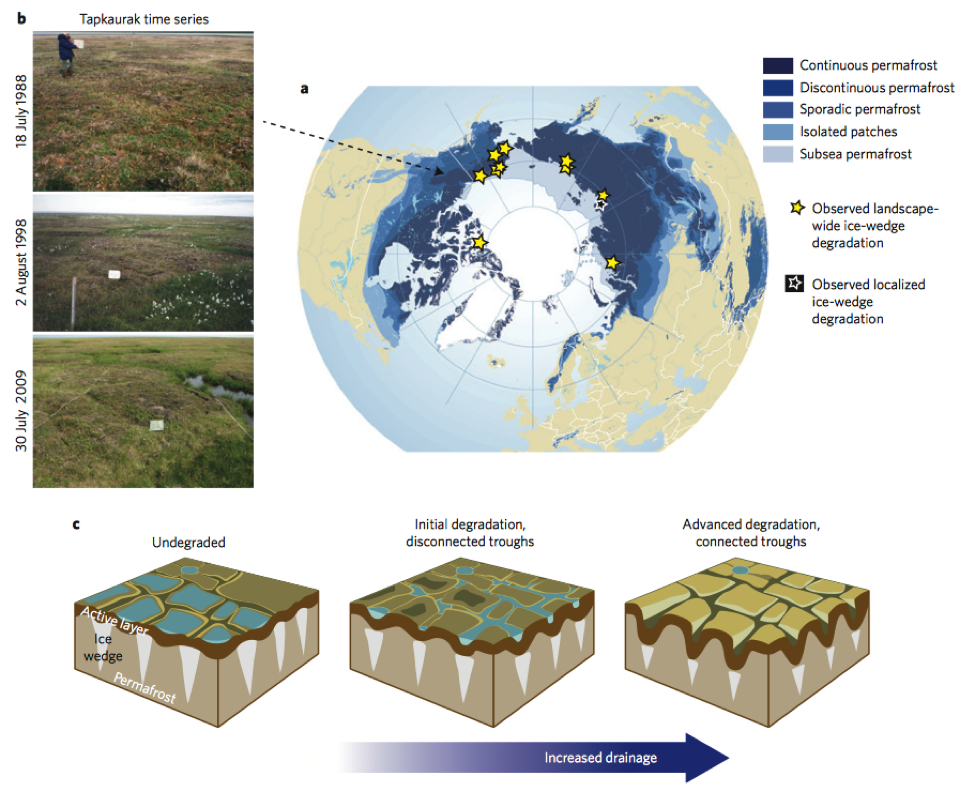

NGEE Arctic
Next-Generation Ecosystem Experiments
Advancing the predictive power of Earth system models through understanding
of the structure and function of Arctic terrestrial ecosystems
Pan-Arctic ice-wedge degradation in warming permafrost and its influence on tundra hydrology
Pan-Arctic ice-wedge degradation in warming permafrost and its influence on tundra hydrology
Liljedahl and her co-authors gathered information about the types of ice wedge polygons and how they changed over time across the Arctic. Although these regions contain “cold permafrost,” with an overall average temperature of roughly minus 14 degrees Celsius, surface thawing still occurred at all of the 10 study sites with nine of them presenting ice wedge degradation across the landscape. This is the first study to determine that ice wedge melting is widespread across the Pan-Arctic on sub-decadal time scales. Melting of the tops of ice wedges leads to ground subsidence around the polygons, which in turn allows drainage of polygon center ponds. This succession of polygon type (from a pond at the center to a vegetated center mound) can create a connective drainage system that encourages runoff, even doubling it, and therefore leads to an overall drying of the landscape even if the amount of precipitation remains the same. The change in snow distribution is key as suddenly a majority of the snow is accumulated in these newly formed channels. Instead of being absorbed by the tundra, the snowmelt water will run-off into lakes and larger rivers. Gradual warming of permafrost has been well-documented in the Arctic, but the polygon study indicates that a brief period of unusual warmth can cause a rapid shift in a short time period.
Ice wedges, which are a common subsurface feature in permafrost landscapes, appear to be rapidly melting throughout the Arctic altering the microtopography and causing succession in polygon type that has profound changes to the storage and flow of water on the landscape.
Surface disturbances such as fire or infrastructure are well known to cause ice wedge melting, but this is all initiated by changes in climate. What is happening right now across the Arctic is something previously undocumented during the last 60 years of Arctic observations.
Sites with observed ice-wedge degradation in the continuous permafrost region (a) which led to changes in surface water and vegetation as seen at Tapkaurak, Alaska (b). C, Schematic representation of the polygon succession, including the undegraded stage with inundated low-centred polygon centres or non-patterned ground, the initial degradation stage with disconnected troughs, where the tops of the ice wedges have melted forming trough-ponds that surround low- or high-centred polygons, and the advanced degradation stage with connected troughs, which represents a laterally connected, well-drained trough-network, mounds and high-centred polygons.
